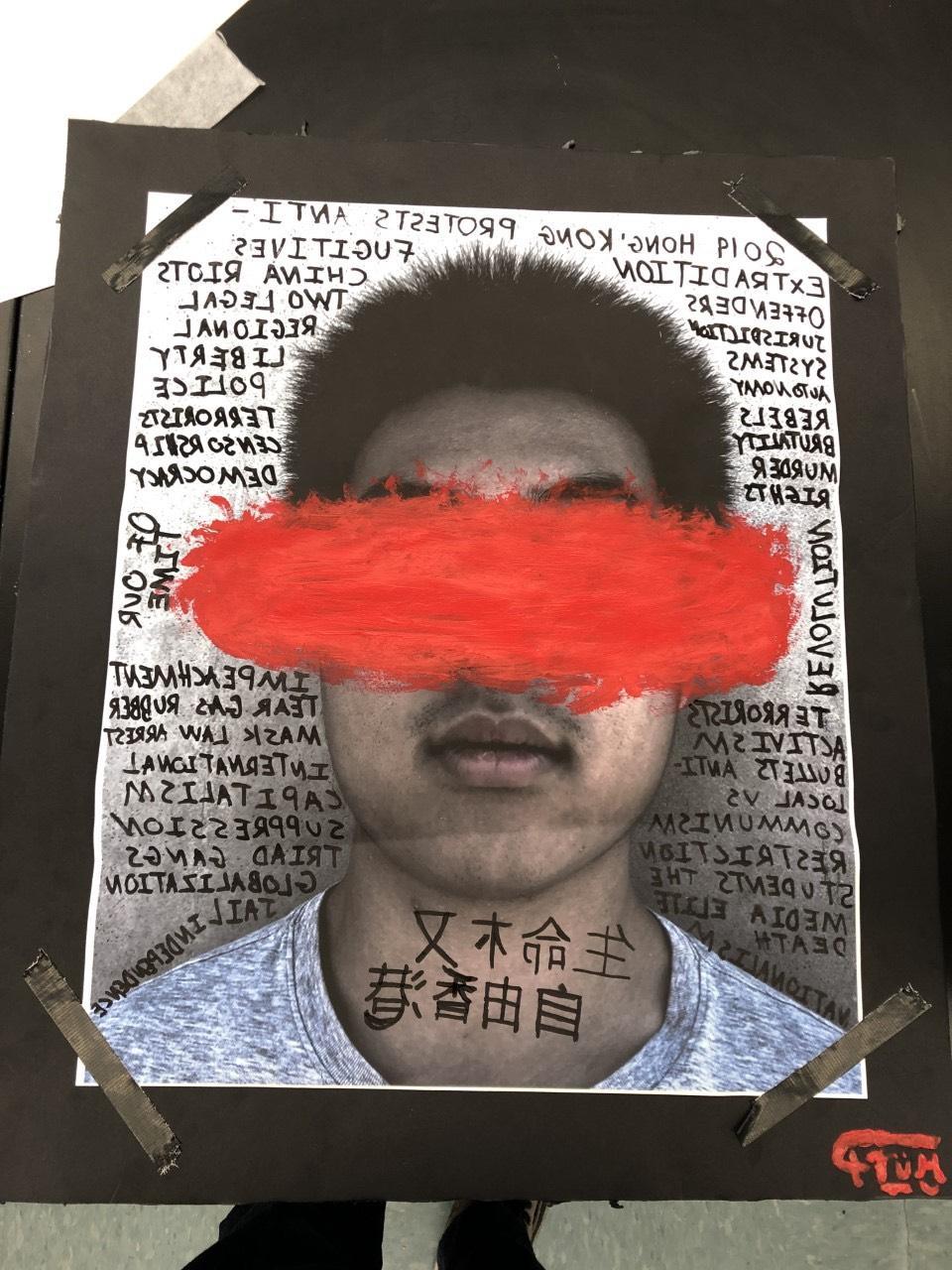
2 minute read
Ethan Hurt
The Right to Life
Photo with acrylic paint and paint pen on black posterboard [60 x 50 cm]
“My first piece which focuses on the Anti-ELAB Hong Kong protests was a mixed medium photography piece meant to appear as an artwork that you would see at a protest or hanging from the wall in some alleyway. I wanted to assume the perspective of a protestor against the Chinese and Hong Kong government; thus, I centralized ideas of anonymity and oppression through the uneasy red slash in the middle. The supporting words are there to evoke images within the viewer.”
The Lesser of Two Evils
Acrylic paint and paint pen on wood board [46 x 46 cm]
“The COVID-19 pandemic affected everyone differently, but for this piece I wanted to show the horror domestic abuse victims faced when the first lockdown began. Iconography dominated the symbolism for this piece to demonstrate the relationship between the woman and man. The cartoonish style was meant to show how others tend to disregard and make light of these kinds of situations in favor of larger stories.”
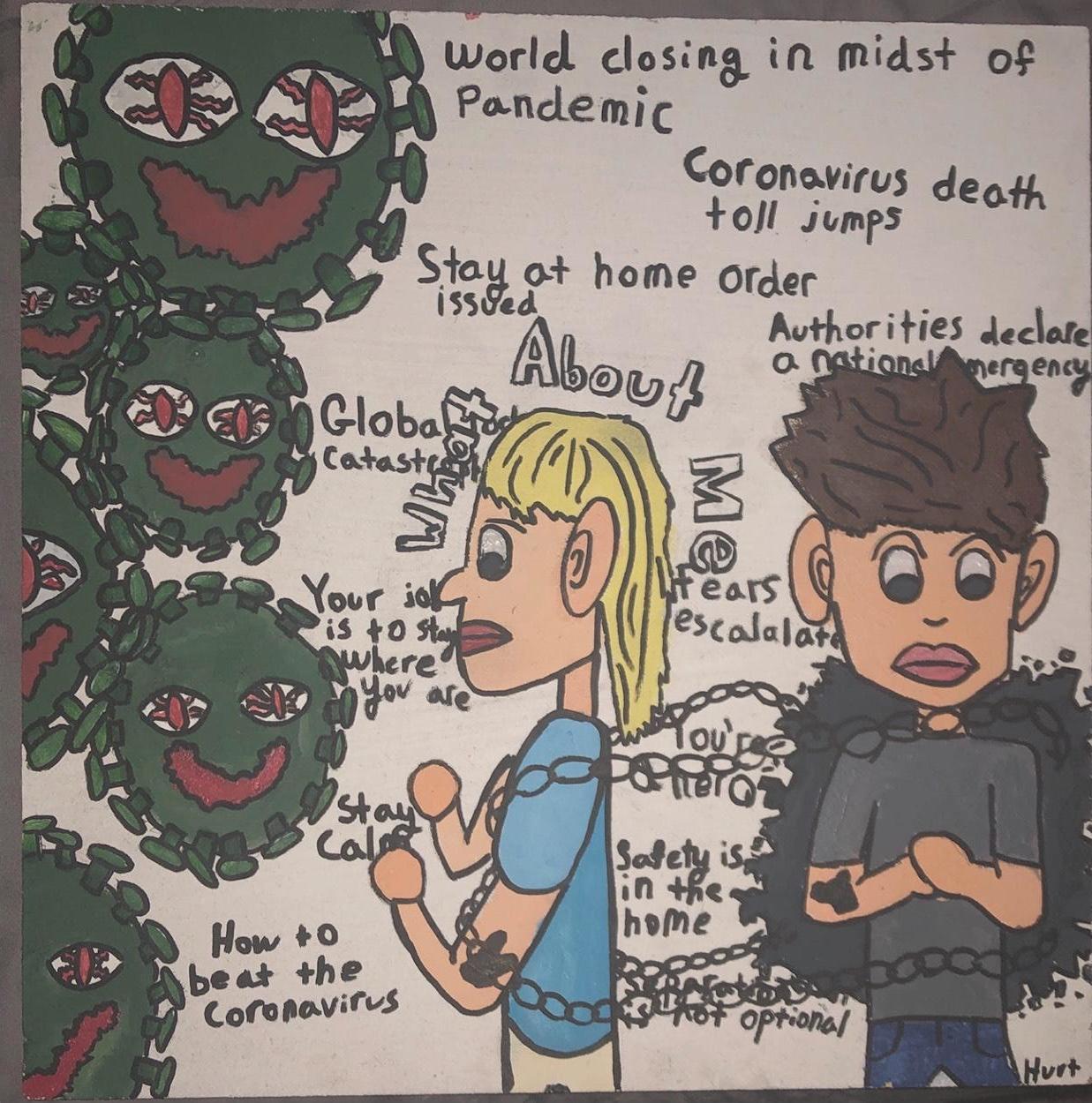
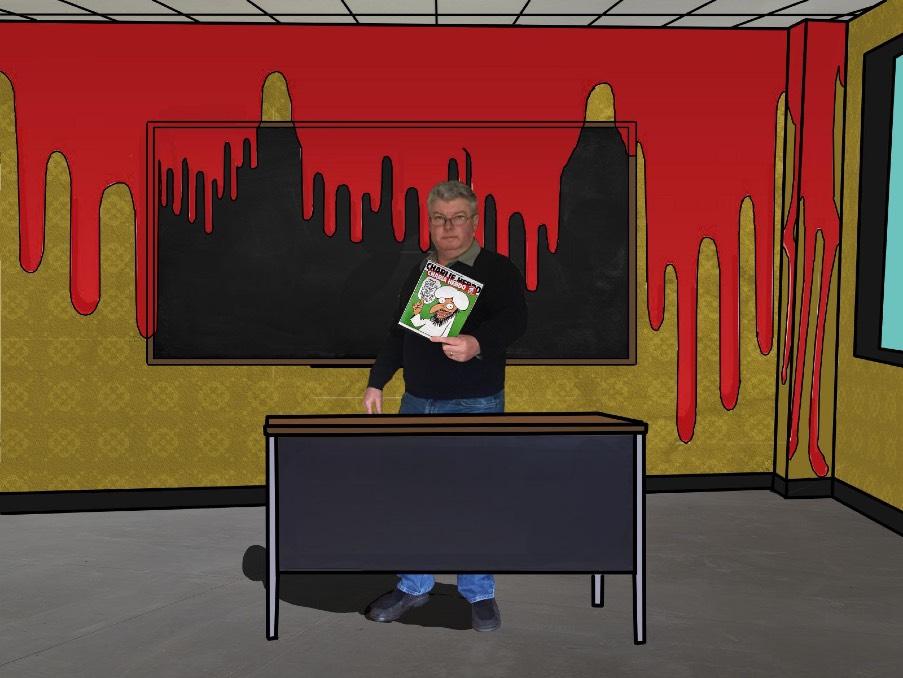
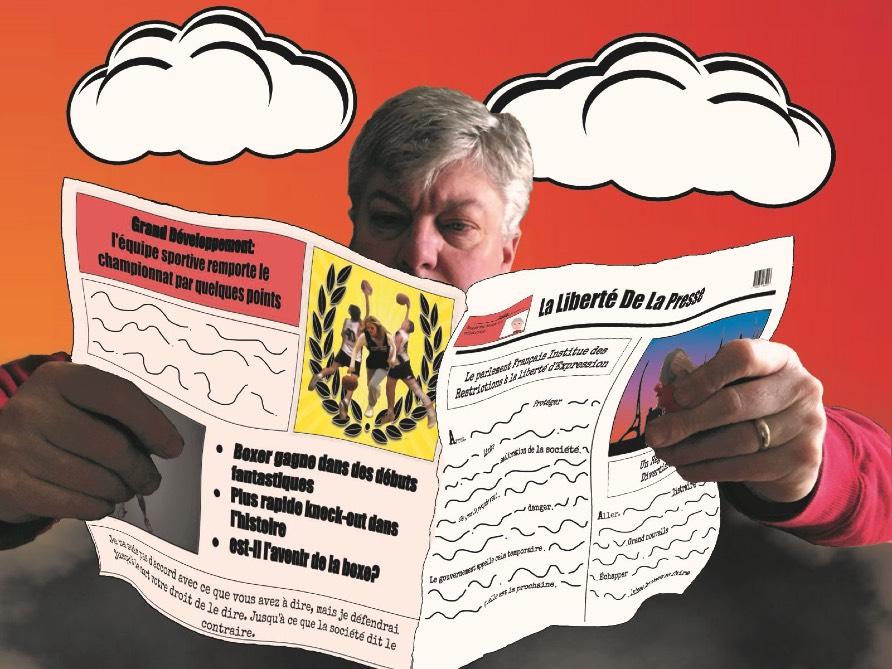
Je Suis Liberté (series)
Digital art made with Krita on glossy paper [20 x 25 cm]
“This series of photos was based on the beheading of a french school teacher and the subsequent conversation about the freedom of expression. The order of the photos was meant to represent a story about how the French government took away the freedom of expression as a result of the bloodbath encountered initially. Strong imagery in each photo was meant to evoke a sense of violence and restlessness from the viewer.”
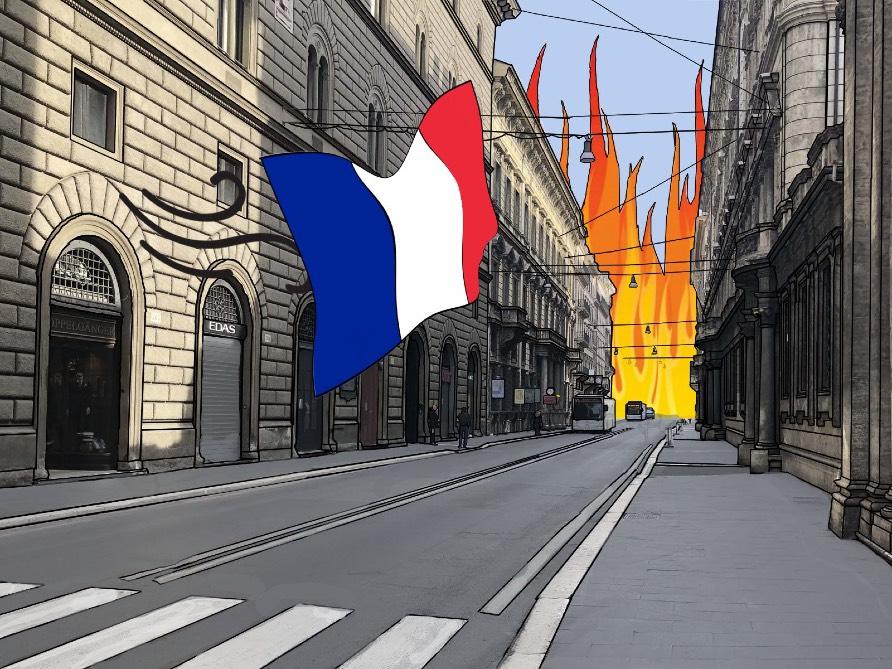
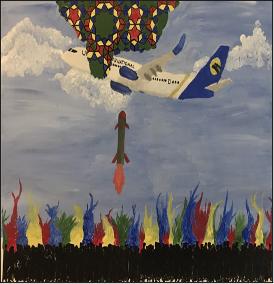
The Iranian Nosedive and the Explosion of The People
Acrylic paint and digital paper made with Krita on white card stock [60 x 45 cm]
“This artwork referenced the events of the UIA-752, but more importantly how the shifting of Iran from a culturalist to militarist state is “sapping” the people of their traditions. Color was the preeminent element in this piece with a lot of the motion of the more colorful aspects “escaping” out of the piece. This was to express how traditional Persians feel like their nation is losing their way in response to Western combatism.”










